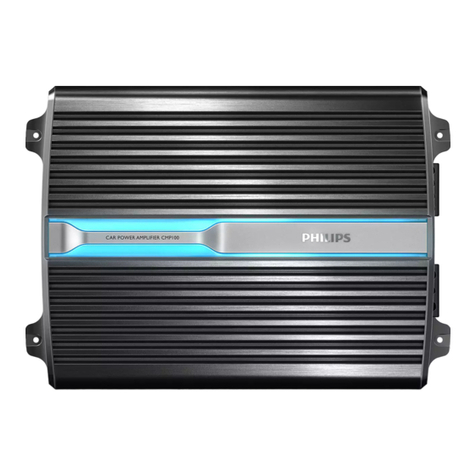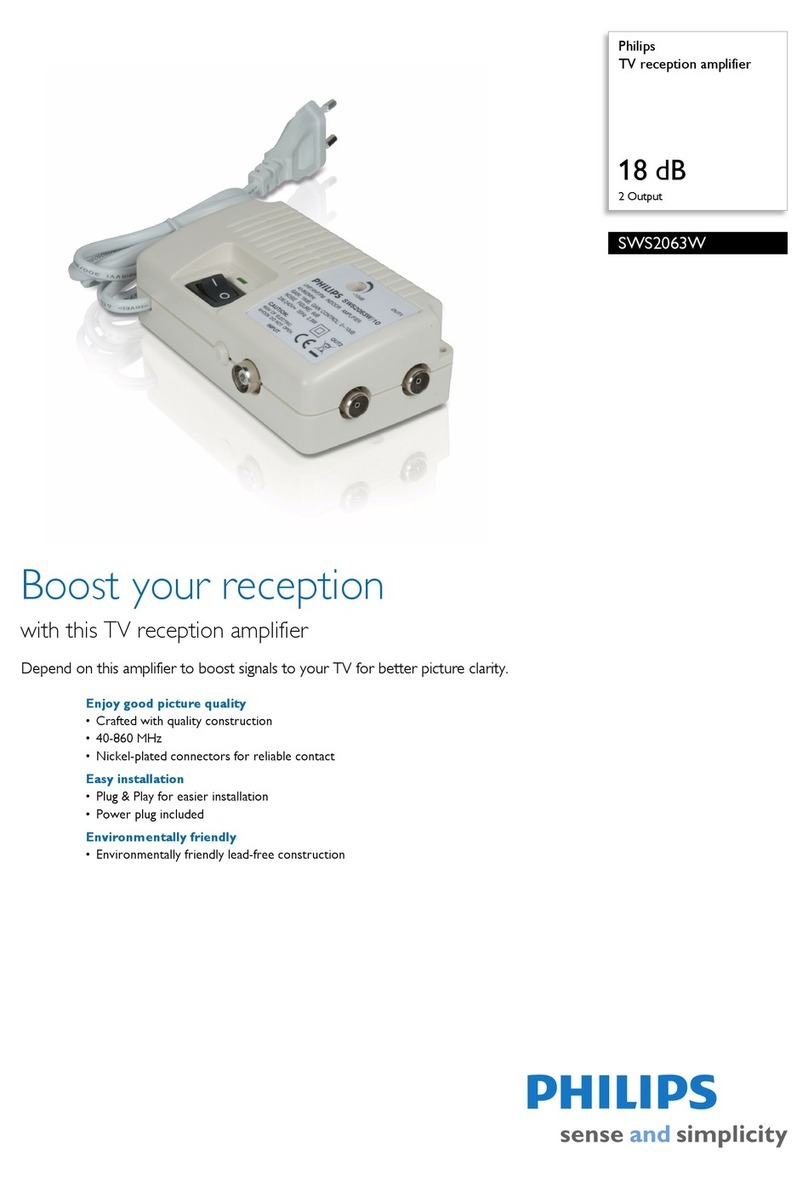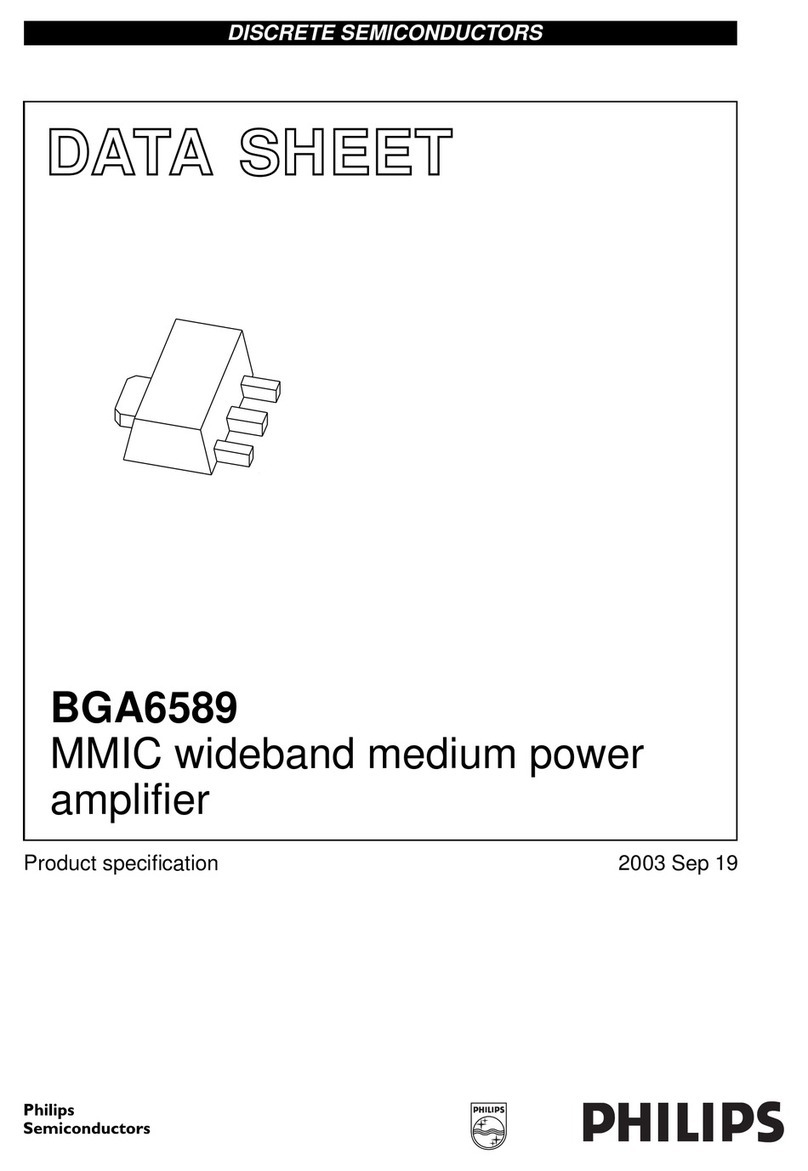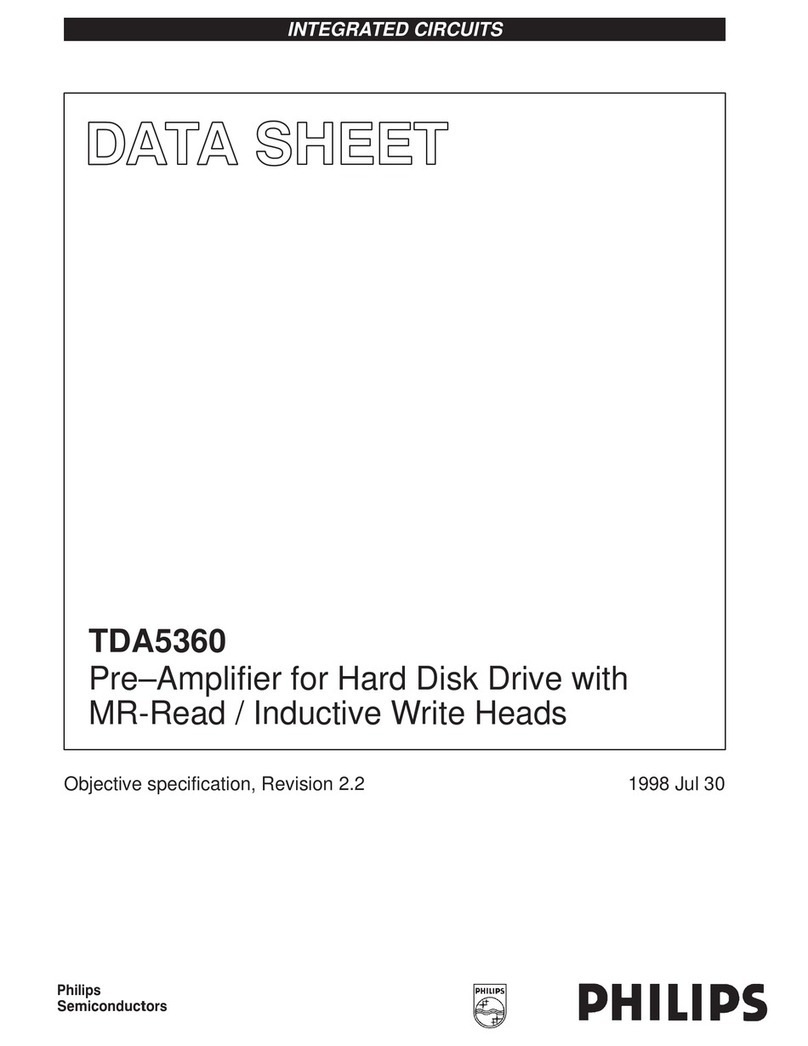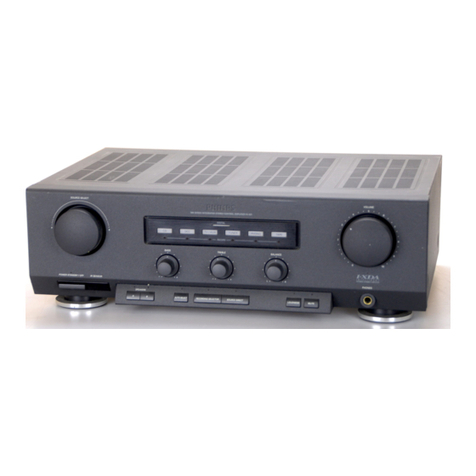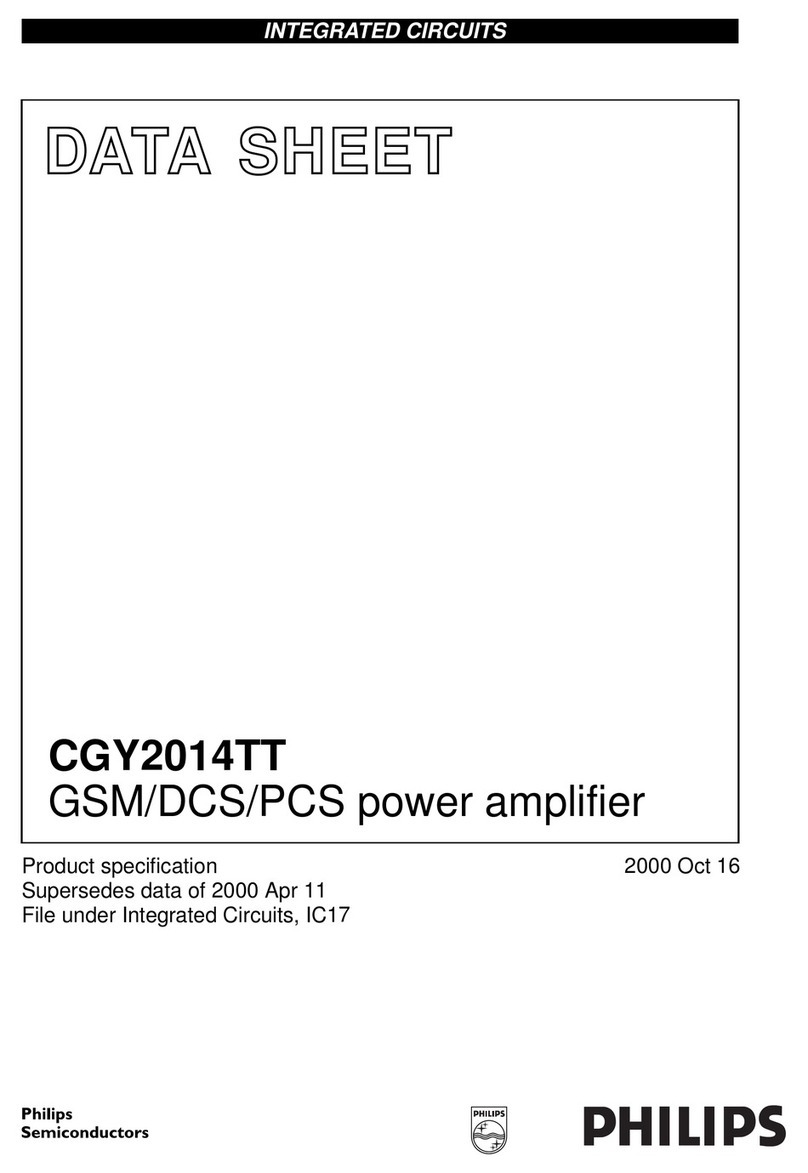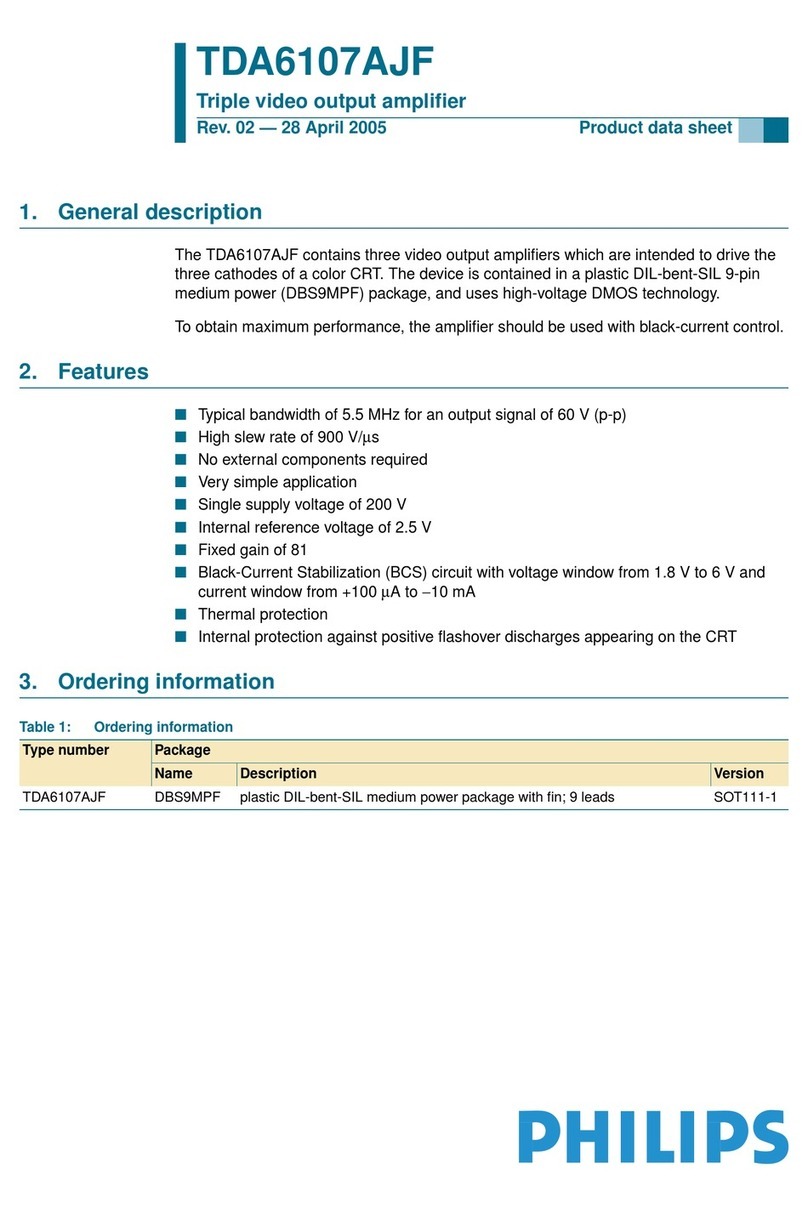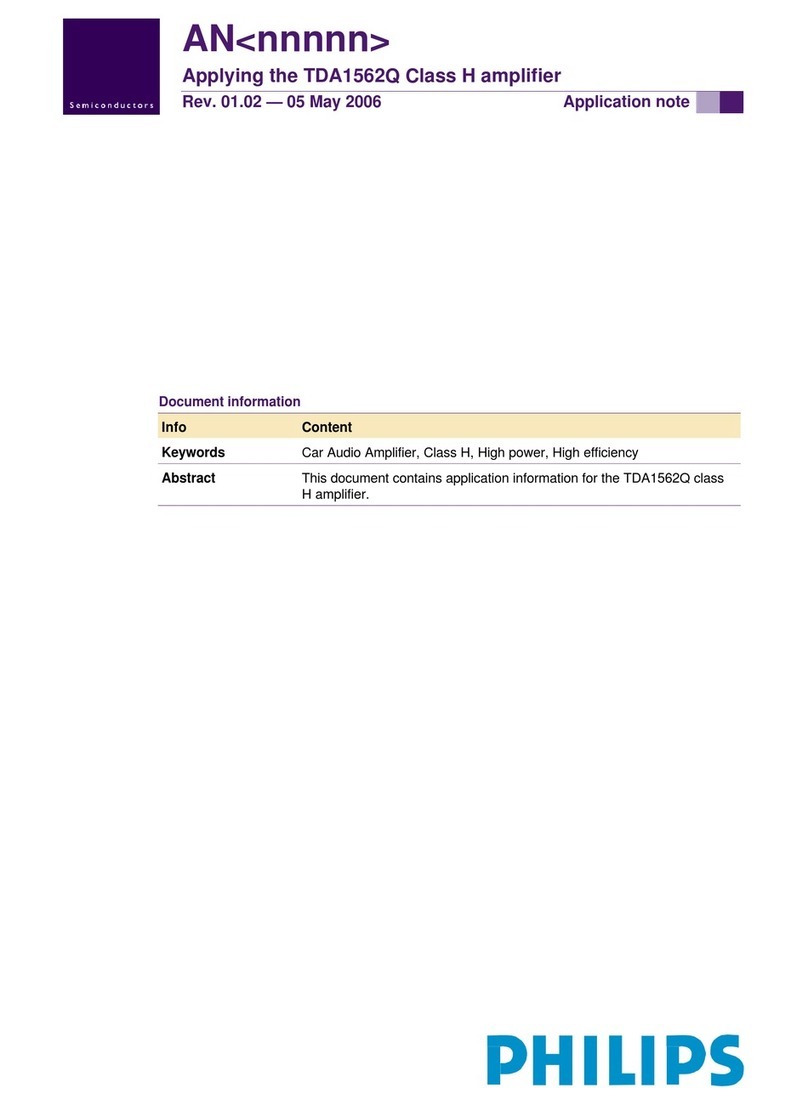2003 Mar 20 9
Philips Semiconductors Objective specification
2×25 W class-D power amplifier TDA8922
8.2 Pulse width modulation frequency
The output signal of the amplifier is a PWM signal with a
carrier frequency of approximately 350 kHz. Using a
2nd-order LC demodulation filter in the application results
in an analog audio signal across the loudspeaker.
This switching frequency is fixed by an external resistor
ROSC connected between pin OSC and VSSA. With the
resistor value given in the schematic diagram of the
reference design, the carrier frequency is typical 350 kHz.
The carrier frequency can be calculated using the
following equation:
If two or more class-D amplifiers are used in the same
audio application, it is advisable to have all devices
operating at the same switching frequency.
This can be realized by connecting all OSC pins together
and feed them from a external central oscillator. Using an
external oscillator it is necessary to force pin OSC to a
DC-level above SGND for switching from the internal to an
external oscillator. In this case the internal oscillator is
disabled and the PWM will be switched on the external
frequency. The frequency range of the external oscillator
must be in the range as specified in the switching
characteristics; see Chapter 13.
In an application circuit:
•Internal oscillator: ROSC connected between pin OSC
and VSSA
•Externaloscillator:connect the oscillatorsignalbetween
pins OSC and SGND; delete ROSC and COSC.
8.3 Protections
Temperature, supply voltage and short-circuit protections
sensors are included on the chip. In the event that the
maximum current or maximum temperature is exceeded
the system will shut down.
8.3.1 OVERTEMPERATURE
If the junction temperature Tj> 150 °C, then the power
stage will shut down immediately. The power stage will
start switching again if the temperature drops to
approximately 130 °C, thus there is a hysteresis of
approximately 20 °C.
8.3.2 SHORT-CIRCUIT ACROSS LOUDSPEAKER TERMINALS
AND TO SUPPLY LINES
When the loudspeaker terminals are short-circuited or if
one of the demodulated outputs of the amplifier is
short-circuited to one of the supply lines, this will be
detected by the current protection. If the output current
exceeds the maximum output current of 4 A, then the
power stage will shut down within less than 1 µs and the
high current will be switched off. In this state the
dissipation is very low. Every 100 ms the system tries to
restart again. If there is still a short-circuit across the
loudspeaker load or to one of the supply lines, the system
is switched off again as soon as the maximum current is
exceeded. The average dissipation will be low because of
this low duty cycle.
8.3.3 START-UP SAFETY TEST
Duringthestart-upsequence,when pin MODE isswitched
from standby to mute, the conditions at the output
terminals of the power stage are checked. In the event of
a short-circuit at one of the output terminals to VDD or VSS
thestart-upprocedureisinterruptedandthesystemswaits
for open-circuit outputs. Because the test is done before
enablingthepowerstages,nolargecurrentswill flow inthe
event of a short-circuit. This system protects for
short-circuitsatboth sides oftheoutputfilter to bothsupply
lines. When there is a short-circuit from the power PWM
outputof thepower stageto one of the supply lines (before
the demodulation filter) it will also be detected by the
start-upsafety test.Practical useof thistest featurecan be
found in detection of short-circuits on the printed-circuit
board.
Remark: This test is only operational prior to or during the
start-up sequence, and not during normal operation.
During normal operation the maximum current protection
is used to detect short-circuits across the load and with
respect to the supply lines.
fosc 910
9
×
R
OSC
------------------- Hz=
